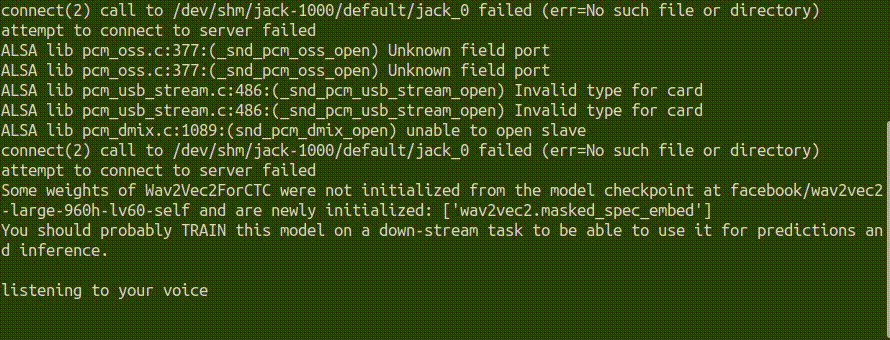Use any wav2vec model with a microphone.
I recommend to install this project in a virtual environment.
python3 -m venv ./venv
source ./venv/bin/activate
pip install -r requirements.txt
Depending on linux distribution you might encounter an error that portaudio was not found when installing pyaudio. For Ubuntu you can solve that issue by installing the "portaudio19-dev" package.
sudo apt install portaudio19-dev
Finally you can test the speech recognition:
python live_asr.py
-
The code uses the systems default audio device. Please make sure that you set your systems default audio device correctly.
-
"attempt to connect to server failed" you can safely ignore this message from pyaudio. It just means, that pyaudio can't connect to the jack audio server.
You can use any wav2vec2 model from the huggingface model hub. Just set the model name, all files will be downloaded on first execution.
from live_asr import LiveWav2Vec2
english_model = "facebook/wav2vec2-large-960h-lv60-self"
german_model = "maxidl/wav2vec2-large-xlsr-german"
asr = LiveWav2Vec2(german_model,device_name="default")
asr.start()
try:
while True:
text,sample_length,inference_time = asr.get_last_text()
print(f"{sample_length:.3f}s"
+f"\t{inference_time:.3f}s"
+f"\t{text}")
except KeyboardInterrupt:
asr.stop() 